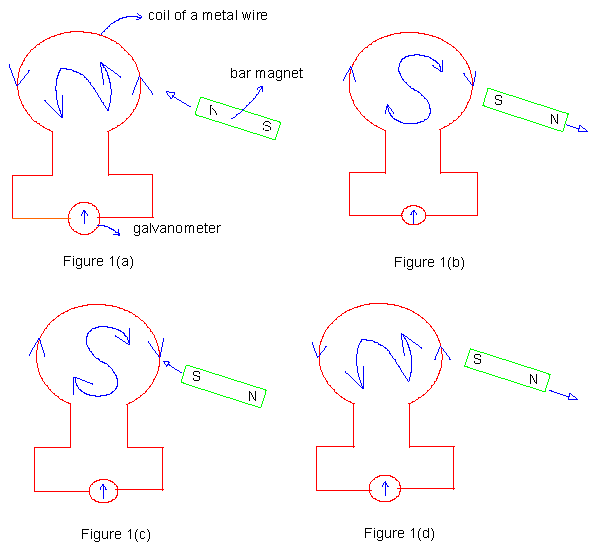|
CHAPTER 25 : ELECTRO - MAGNETIC INDUCTION When Oersted established that electric current produces a magnetic field i.e., a varying electric field produces a magnetic field, an obvious question arises: "can a varying magnetic field produce electric current?" Faraday found the answer to be in the affirmative.
25.1 Faraday's Experiments
The experiments are performed using a bar magnet, a coil and a galvanometer. There were a number of observations made. One was that whenever the magnet was set in motion ( indicated by the arrow) relative to the coil, current was found to flow through the coil. The direction of current induced in the coil was found to depend on the pole of the magnet facing the coil and on the direction of the motion of the magnet. It can be seen from fig: 1 that the induced current flowing through the coil is always such that it opposes the motion of the magnet. This process of producing induced current due to a varying magnetic field is called electro- magnetic induction. Now, the intensity
|
25.1 Faraday's Experiments Follow @Pinkmonkey_com  |

